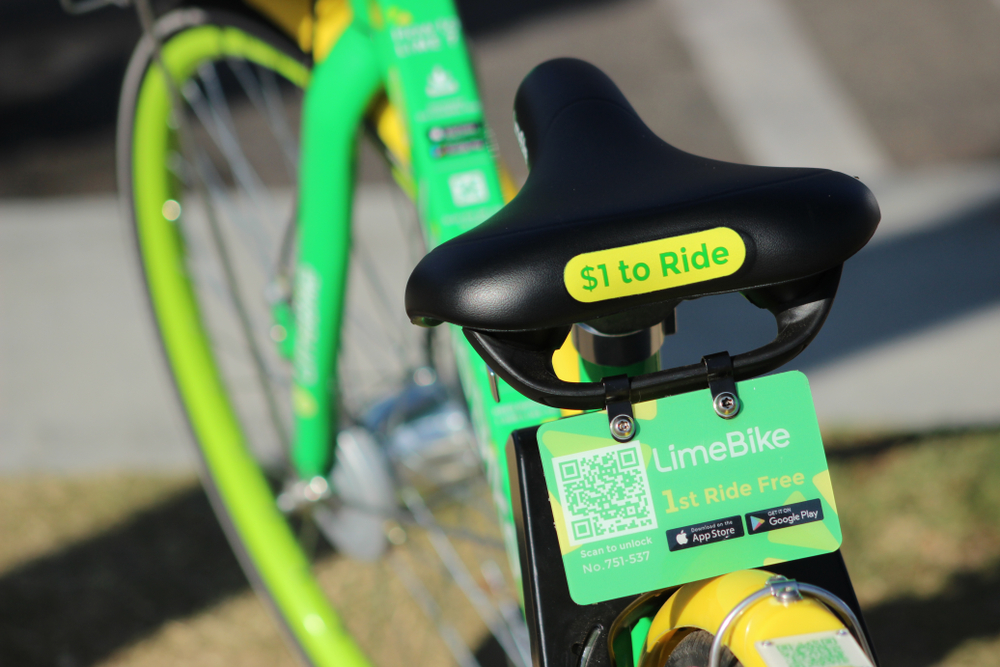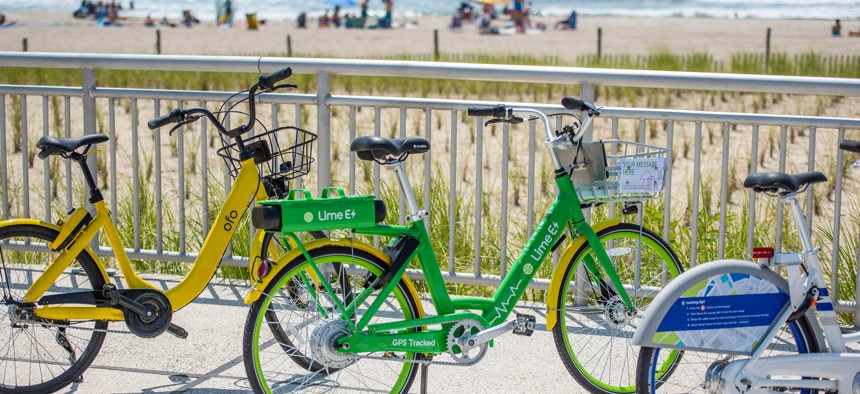New York City has more subway stations than any other city in the United States, but enter any one of those stations at rush hour, and you’ll likely find people complaining about late trains, skipped stops, and overcrowded cars. With debates over who owns the subway, the looming “L” shutdown, severe traffic, slow and unreliable bus service, and persistent transit “deserts” in the outer boroughs, New York needs to develop alternative transportation options. This summer, the city began to explore one of those options: dockless bike shares.
In July, the New York City Department of Transportation rolled out a pilot program employing five dockless bike share companies to launch in some of the neighborhoods least served by mass transit in the outer boroughs – commonly referred to as transit deserts. Lime is one of three companies leftstanding in the pilot program, with fleets on Staten Island and the Rockaway peninsula in Queens. The other companies still participating are Jump and Motivate, which operates Citi Bike. So far, Lime has recorded over 50,000 rides on its bikes since the pilot started.
“We should be giving New Yorkers as many options as possible,” said Phil Jones, Lime’s new East Coast government relations senior director. “When we're facing transit issues, Lime wants to be a partner in making sure that people are then able to not have large disruptions to their day, and that they're able to get to their jobs, they're able to get to school, they're able to just run their everyday lives.”
One of the advantages of dockless bikes is that riders can lock the back wheel and leave them anywhere – they don’t have to search for docks with open spaces as they do with Citi Bike. Lime operates on an smartphone app similar to Citi Bike’s, and riders have to create an account on the Lime app and load at least $3 to start riding. While riders are free to leave their bikes anywhere in the zone, Lime has a team working to redistribute the bikes to keep their locations balanced and convenient.
Initially, Lime had 200 of its pedal and pedal-assist e-bikes in each Staten Island and the Rockaways. When the DOT requested that Lime double its fleet in the Rockaways (tallying 400 there and 200 in Staten Island), Jones said they jumped at the opportunity. “We see ourselves as partners with the Department of Transportation, and we want to provide them with any assistance that we can give,” he said. Unlike ride-hailing companies such as Uber, which have sometimes butted heads with city officials, Lime has focused on responding directly to the needs outlined by the city.
Jones doesn’t envision Lime – or dockless bike shares in general – replacing other forms of transportation, but as filling in a gap. He credits Citi Bike with servicing the areas where it already exists, which are mostly in or near Manhattan. But in neighborhoods where the nearest bus or subway stop might be miles away, Jones sees Lime providing a sustainable, accessible transportation option – cheaper and cleaner than driving. “We see a three-mile radius outside of any transit location, and we want to be able to serve the people who are there,” he said.
Jones, a political veteran who has worked for New York City Council, the office of the public advocate, and lobbying firms like the American Israel Public Affairs Committee, is using his experience in government and advocacy work to help establish Lime’s community-first goals. “We're in areas that people thought that this would not work, and we're proving that it does,” Jones said. “We're doing it in a way that builds true partnership, so people can see that this is not something that's happening to them, this is something that's happening with them.”
By partnering with organizations like the Richmond Terrace Therapeutic Gardens, the Rockaway Waterfront Alliance, the Rockaway Youth Task Force, and the YMCA, Lime has attempted to weave itself into the “fabric” of the community, as Jones puts it. He points to programs like LimeHub, which encourages riders to leave bikes outside local shops and stores, where they can then get a store discount, as well as partnerships with educational groups like Bike New York, a non-profit that teaches adults and children how to ride.

A traditional bike costs $1 for every 30 minutes. In July, when New York City officially approved e-bikes (that max out at 20 mph), Lime introduced its fleet of pedal-assist bikes, which cost $1 to unlock, in addition to 15 cents per minute. Lime provides a discount to anybody receiving federal or state subsidies or assistance.
The dockless bike pilot program has hit a few road bumps. Back in August, problems first reported by the New York Post included a lack of available bikes, damaged bikes, and bikes left in strange locations. “There have been issues of course, and there's going to be growing pains with any new program that you institute,” Jones said. “We actually run our operations team 24/7. So we have three shifts, and they're constantly out there rebalancing our bikes, making sure they're where they're supposed to be, and they're not piling up.”
The pilot program is set to close at the end of October, and any renewal or extension will be up to the DOT. Jones, meanwhile, maintains the view that transportation access is integral to social and economic equity. “If you're looking at issues that people face, especially if they're trying to make ends meet, housing is always first, and slightly under that is transportation,” he said. “We know that New Yorkers and people across the country are working two to three jobs just to be whole. To do that, you have to have a reliable form of transportation.”
This post has been updated to reflect the most recent numbers of rides.

NEXT STORY: What it means to be a ‘Dreamer’


